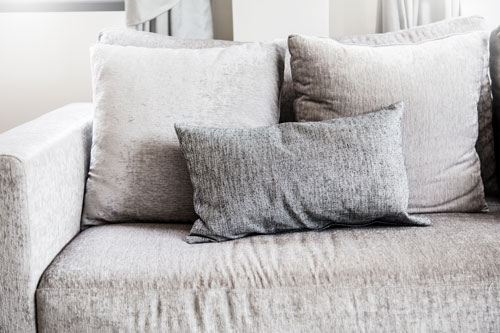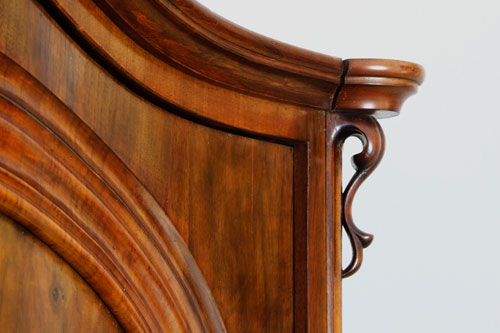When it comes to furniture, prioritizing quality construction will always give you the best return on your investment. Follow our advice and we’ll show you how to choose high-quality pieces that will give you a classic style that will last far beyond a single season.
What is it made of?

The first clue to a piece’s quality is in its composition. Solid wood is always preferable to a particle or pressed core, but even plywood can be acceptable given that it has at least nine layers. While veneer was once considered to be of inferior quality, today’s options can be just as nice as solid wood but at a much more affordable price. Veneer furniture relies on a wood base covered by several thin layers of a high-quality wood. If the veneer is thick, made of a solid hard or softwood and shows no signs of warping, it should last a good long while.
How is it constructed?

When it comes to assembly, we can learn a lot by looking at the joints and corners of an item. Expensive, well-made pieces will be joined rather than nailed together. Anything that relies solely on glues, staples or nails will be of inferior craftsmanship. Dowels, screws and pegs are all good signs, as are dovetails. Corners should include a reinforcing lock and large pieces should include a crossbar for bracing.
Is it upholstered?

Furniture that includes fabric adds another layer you can inspect. For chairs, sofas or loveseats check to see if the cushions are zippered and removable for cleaning. They should fit well, with matching patterns and weave. The seat should be a solid block of foam, rather than chips, and should be lined with a protective covering of cotton or muslin. Seams should be even, strong and show no loose thread or signs of strain. There should also be tags with care and washing instructions.
Are there metallic elements?

With furniture that include metal as part of its design, there are a few things to note. Metal legs, arms or other free-floating items should be welded into a solid joint rather than attached with screws and bolts. The welding itself should be even, show no signs of cracking or wear and ideally be ground down for minimal visual impact. If buying more than one, each chair should be uniform in style, shape and height. Discrepancies between individual models can indicate poor quality. If the item is reflective, with chrome or brass accents, it should be evenly polished with no chips or pits in the plating.
It’s all in the details

Finally, consider the details and overall craftsmanship of the piece. Look at all the elements together. Is the piece square, did all the drawers and cabinets take stain uniformly? Are there any look elements, wobbly legs or unbalanced door hinges? Are the cushions taught, evenly sewn and the fabric flaw free? Are there any pulls, runs or bumps in the upholstery? Ask yourself these questions before investing in a piece that you hope to have for years to come.
Whether you are buying new from a showroom, direct from a designer or just looking to know a little more about your next flea market find, these tips can help guide you on the right path. so keep that in mind when searching for your next big thing.






